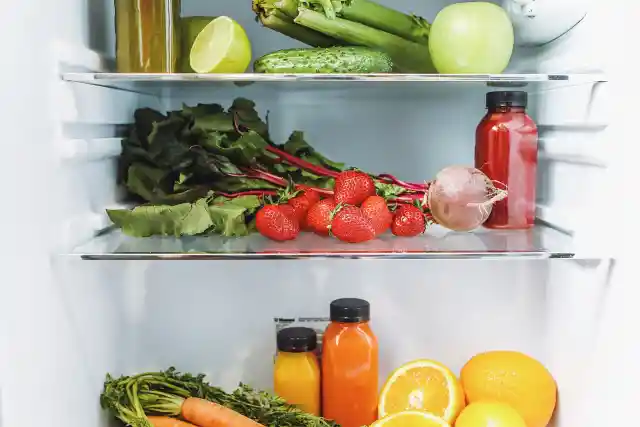The refrigerator is the most used equipment in a home, and you probably use it numerous times a day between preparing a quick breakfast before leaving for work and reaching for a late-night snack. With so much activity every day, the interior of your fridge is bound to get messy at some point.


Expired food lying in the back, shelves stuffed with rarely used condiments, and containers of leftovers piled so high you can't see over them—you know the signs. Fortunately, organizing your fridge can be a quick and easy process.
Here's the ultimate fridge organization cheat sheet, complete with pro tips and tricks to make your life easier.
Empty out the fridge and take inventory
Taking everything out of the fridge and verifying expiration dates is the first step in learning how to reorganize your refrigerator. There probably are some condiments that are past their expiration date.
If at all possible, assemble similar items to make room for new ones. While everything is out, you should able to clean the refrigerator much better.
Create an “Eat First” Section
Creating a "eat first" compartment in your refrigerator will help you waste less food. Food products having a reduced shelf life should be kept in plain sight.
Even better, you should designate a container marked "eat first" as the first place you should look while cooking or eating. The middle shelf is the ideal location for eggs since they require stable temperatures to stay fresh.
Organize by zones
Sort fruits, vegetables, condiments, and so forth into separate groups. This might help you see what you have and what you need to replenish. Place the things you use the most—or wish to use more—in an accessible location that is also at eye level.
Make healthier snacks the focus of attention so that you and your family will grab for them more frequently. You might want to place all of your favorite beverages, condiments, and breakfast items in one convenient location.
Remove Packaging
Store-bought foods should be kept in the packaging they arrived in, but all that heavy packing could be clogging up your fridge. Snacks like yogurt, juice boxes, cheese sticks, and others are often packaged in boxes.
Remove the snacks from that container. You can quickly see what you have and simultaneously clear away the unnecessary visual clutter while still being able to see what you have.
Use Clear Containers
Purchasing a few shallow transparent containers is a simple method to guarantee that you follow your system and store everything in its proper location. These are incredibly useful for organizing your belongings and keeping related items together.
Write the food type or expiration date on each one. Clear containers are considerably easier to remove and clean than a whole shelf, and they'll also help you maintain a strong framework for your organizing.
Where not to keep milk and egg?
The interior of the door and the top shelf of your refrigerator are the hottest parts. Milk should be placed on the middle shelf since it has stable temperatures and is less likely to spoil. The same applies to eggs; if your door has an egg section, don't use it.
Keep condiments, which are often salty and rich in vinegar, inside the door. And if your refrigerator has specific compartments for dairy and sandwich meats, be sure to use them. Snacks and leftovers should be placed on the top shelf.
Tools and Storage
Lazy Susans are excellent refrigerator organizers for two reasons: They rotate to make it easier to collect and gather random things.
For fresh, ready-to-eat veggies, jam jars, kid-sized snacks, and yogurt packs, stackable containers are perfect. Purchase a drink dispenser a la vending machine to serve as an organizer.
Use liners in drawers
By using paper towels or other liners that can absorb any spills or drips, you can make normal cleaning easier.
In order to prevent cross-contamination, you should line any drawers and shelves that contain things like meat and poultry.
Store meat on the lowest shelf
Your meat should only be kept in the freezer or on the bottom shelf of the refrigerator, where it won't drip onto other meals.
Put a tray underneath the meat on the lowest shelf to help control any potential leaks and to make cleanup a breeze in the event of a spill.
Keep fruits and veggies separate
When storing fresh produce, it's crucial to use the appropriate refrigerator storage compartments for fruits and vegetables. Fruits and vegetables should be stored in either a high or low humidity environment, depending on the kind.
Make sure to keep them in the crisper, or humidity-controlled drawer of your refrigerator. They will stay fresher for use in boiling or steaming veggies as a result. Produce with "thin skin," such as leafy greens, broccoli, strawberries, and other ethylene-sensitive produce, should generally be kept in environments with greater humidity levels.